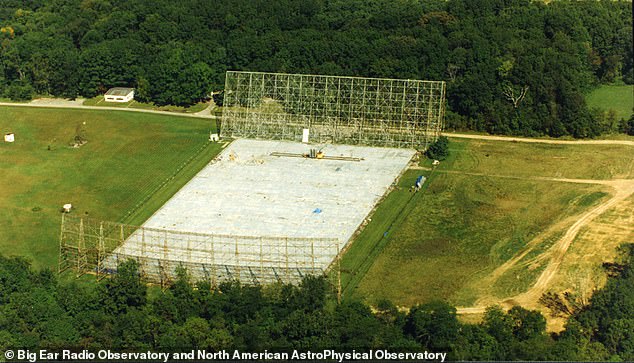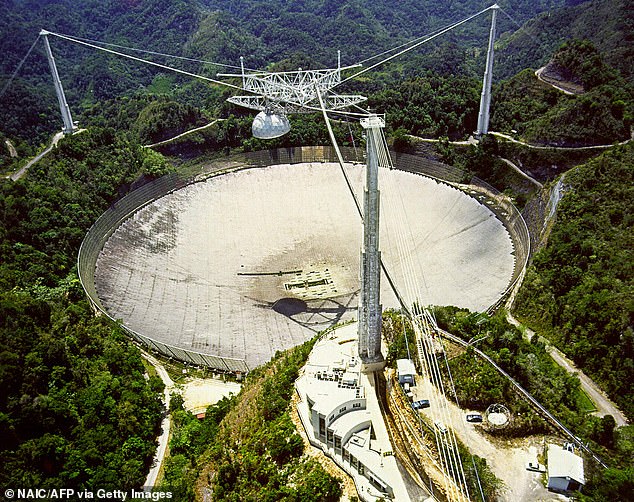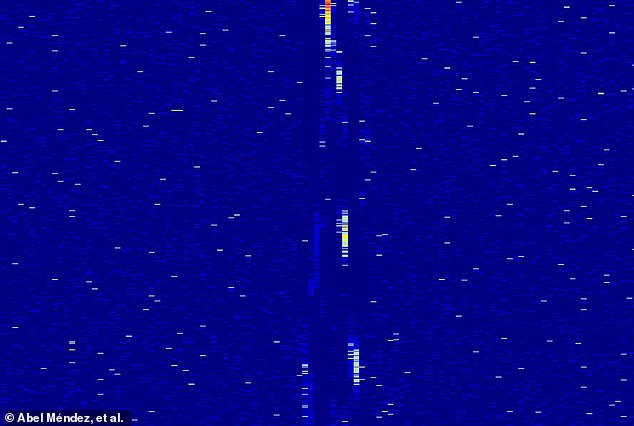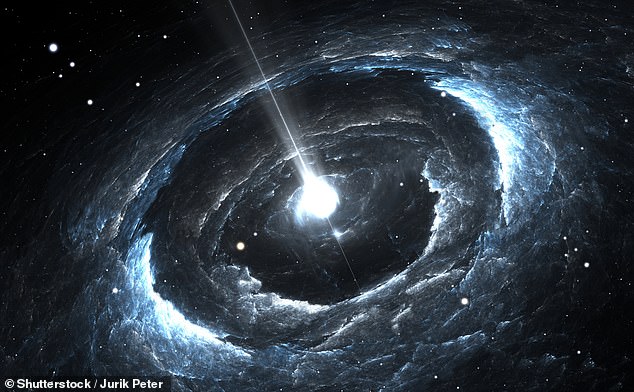Scientists analyse the famous ‘WOW!’ signal first detected in 1977 – and finally reveal the truth about the mysterious flash
In 1977, Ohio State University’s Big Ear radio telescope captured a signal from space so strange that scientists still can’t make sense of it nearly 50 years later.
For decades, scientists have been trying to find a natural process that could cause the 72-second flash that prompted astronomer Jerry Ehman to write “WOW!” on the telescope’s readout.
A new analysis of the so-called WOW! signal now shows that it may have been caused by an enormously powerful laser hitting Earth.
According to experts, this was not the first time an alien star had appeared, but rather the completely natural result of a rare coincidence between a collapsed star and a cloud of cold hydrogen.
Unfortunately for alien hunters, scientists from the University of Puerto Rico at Arecibo say this new evidence shows the WOW! signal is not evidence of life beyond Earth.
For decades, scientists have struggled to find a natural process capable of producing the 72-second flash that prompted astronomer Jerry Ehman to write “WOW!” on the telescope’s readout.
When the WOW! signal reached Earth, many scientists suggested that this could have been the first “hello” from a distant alien civilization.
Not only was the signal exceptionally powerful, it also arrived in an unusually narrow frequency band around 1420 MHz – comparable to the frequencies produced by atomic hydrogen.
Because hydrogen is so abundant in the universe, some have suggested that advanced civilizations might use its frequency as a calling card to signal to other intelligent species.
Other natural explanations for the phenomenon have also been proposed, such as passing comets ejecting clouds of gas.
In the absence of a good natural explanation, the idea arose that the WOW! signal was a ‘techno signature’ from another world.
Professor Abel Méndez and his colleagues believe they have identified a series of similar signals that could explain the origin of the WOW! signal.
They made the discovery while searching through the archives of the now-defunct Arecibo Observatory’s Radio Emissions from Red Dwarf Stars (REDS) project.
Because this telescope had a similar experimental setup to the Big Ear radio telescope, he hoped that it would be able to show whether anything like the WOW! signal had ever been observed.
The researchers discovered several signals that closely resembled the WOW! signal, but were significantly weaker.

In 1977, Ohio State University’s Big Ear radio telescope (pictured) picked up a signal from space so strange that it still baffles scientists nearly 50 years later

Researchers have used data from the now-defunct Arecibo Observatory (pictured) to find signals that match the original WOW! signal. This evidence suggests that it could be the product of a giant space laser
Four of these come from the small red dwarf star Teegarden’s Star, which is just 12.5 light-years from Earth.
Professor Méndez says: ‘Our latest observations, made between February and May 2020, have revealed similar narrowband signals near the hydrogen line, although less intense than the original Wow! signal.’
What makes Teegarden’s star unique is that it is surrounded by clouds of cool atomic hydrogen.
When the intense light from the red dwarf strikes these clouds of hydrogen atoms, they are stimulated to produce a powerful burst of microwave energy in the 1420 MHz frequency band.

Researchers discovered similar energy bands (pictured) produced at fainter levels by a nearby red dwarf star called Teegarden’s Star. Importantly, this star is surrounded by clouds of atomic hydrogen
The result is a completely natural microwave laser, or maser, within the hydrogen range that looks very similar to the WOW! signal.
The researchers say the WOW! signal likely arose when an even more powerful burst of energy collided with a similar hydrogen cloud, creating an even larger maser.
Such a powerful outburst is rare, but it could be caused by a particular type of neutron star called a magnetar.
These are created when a star collapses and explodes in a supernova, leaving behind an ultra-dense, rapidly spinning core with an extremely powerful magnetic field.
If a neutron star’s outburst hits a cloud of cold hydrogen gas, it can create a huge maser burst, just like the WOW! signal.

The signal may have been produced by a microwave laser that was excited by the collision of energy from a magnetar (artist’s impression shown) and a cloud of hydrogen gas. This means that the Wow! signal is not evidence of extraterrestrial life
Because it is extremely rare for a magnetar to align with a hydrogen cloud in just the right way, this also explains why we haven’t heard the signal since.
If true, this means there is no reason to assume that the WOW! signal is evidence of extraterrestrial life.
In their paper, published on arXiv, Professor Méndez and his colleagues write: ‘Our hypothesis explains all the observed features of the Wow! signal and introduces another source of false positives in technosignature searches. It also suggests that this signal represented the first recorded astronomical maser flare in the hydrogen line.
“We are continuing Arecibo Wow! and exploring our extensive observational series of Arecibo REDS. Future studies will include archival data from the Arecibo Observatory.”

